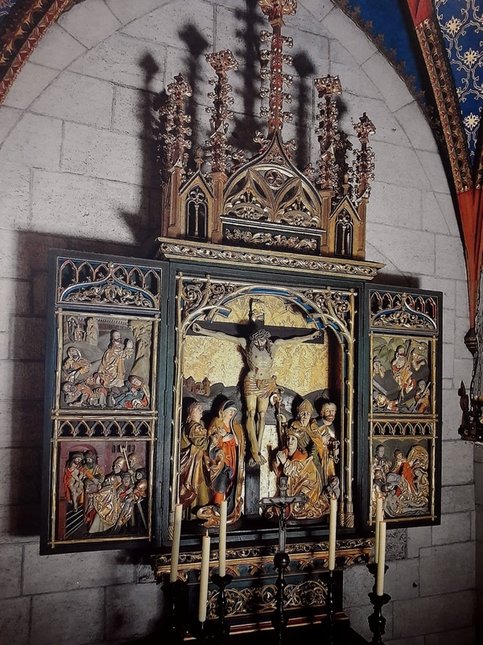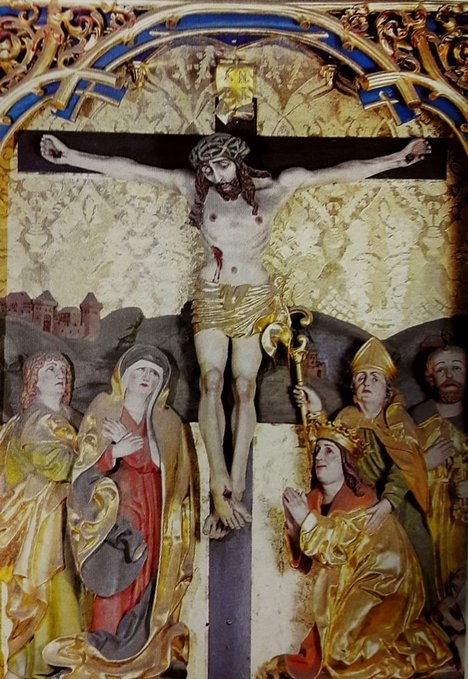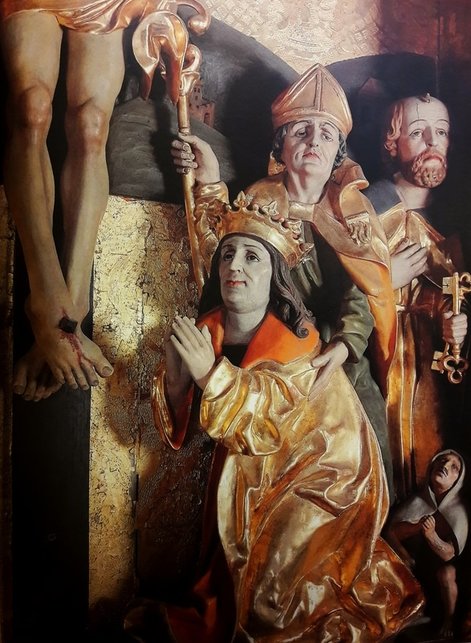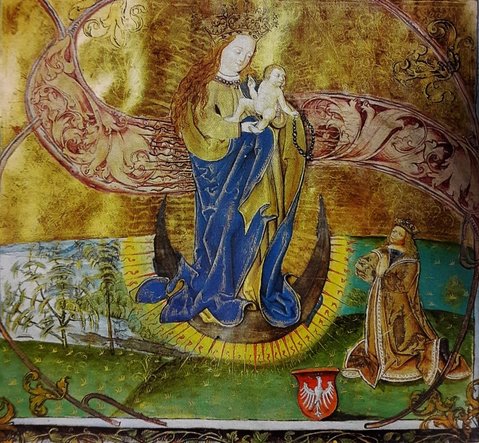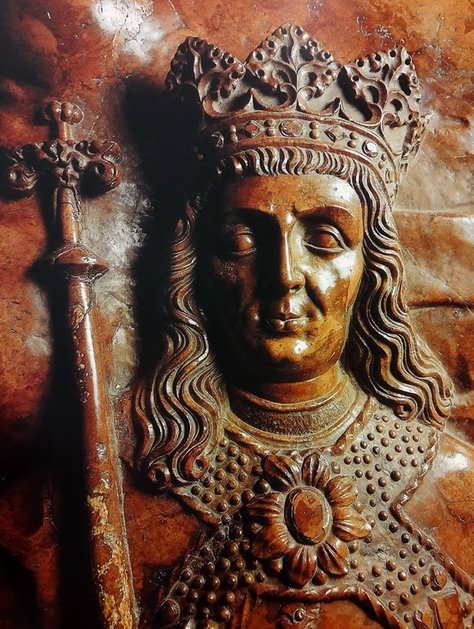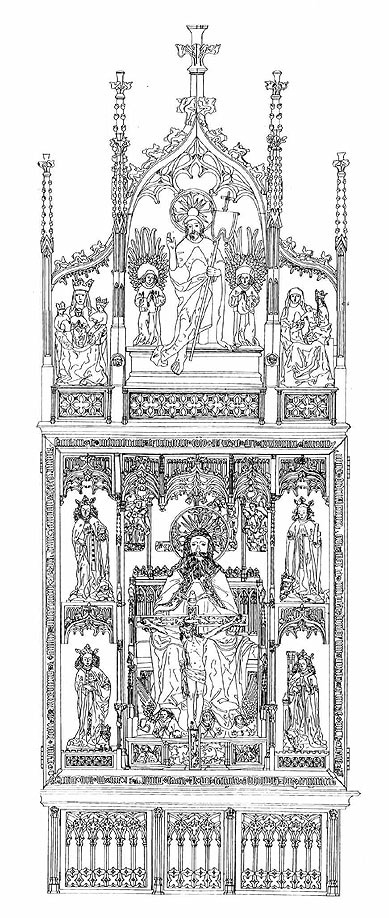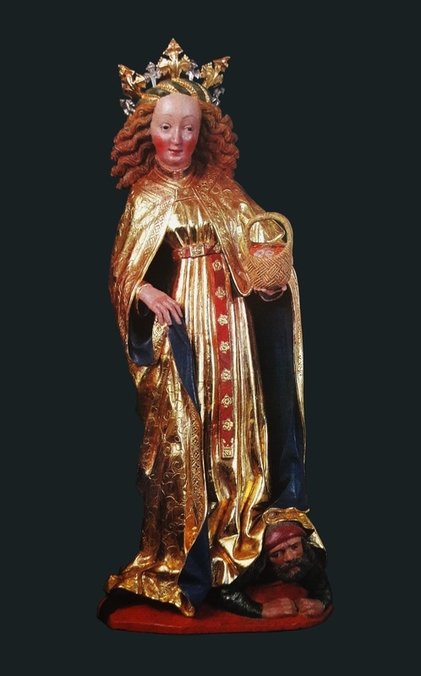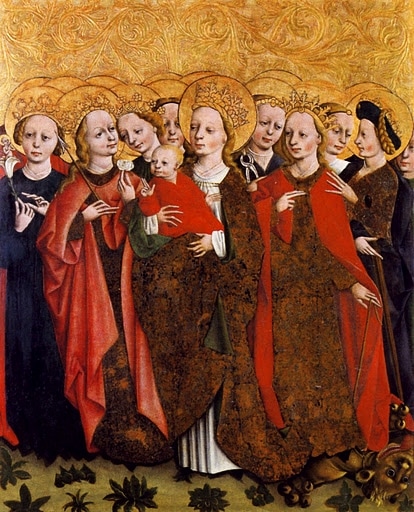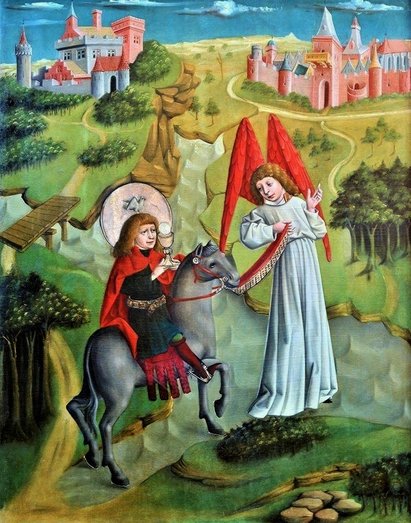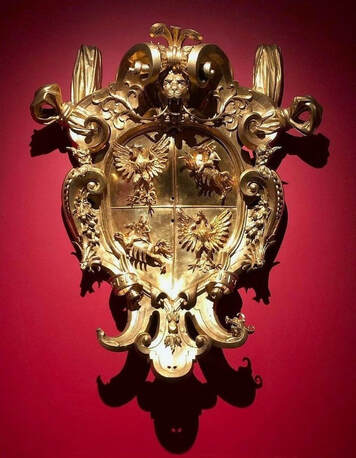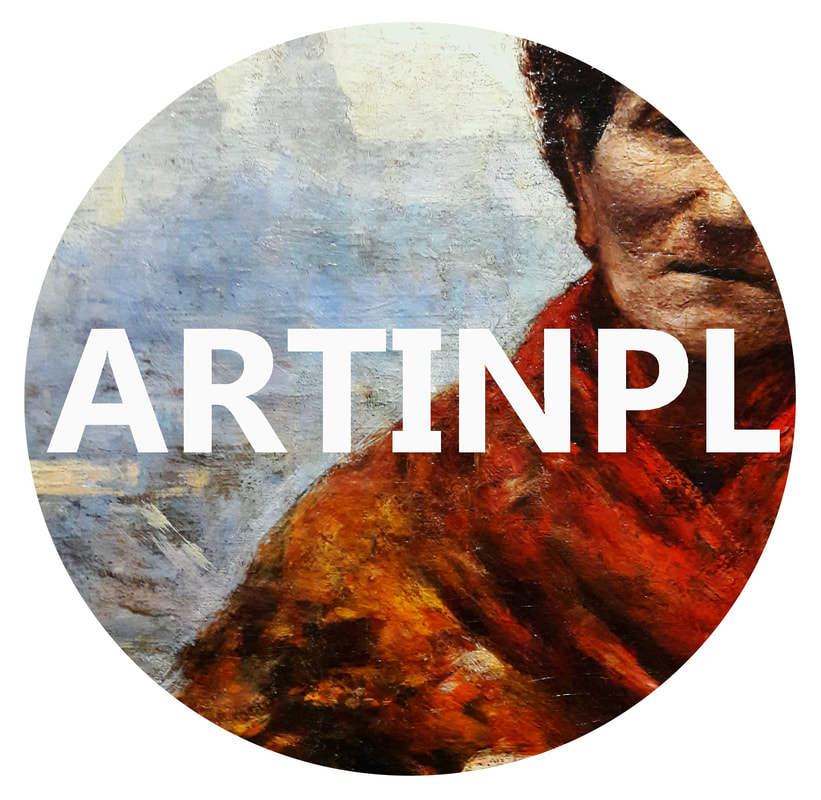|
The reign of king John Albert was a period of gradual transition from gothic to renaissance art in Poland. Majority of preserved effigies of the king were most probably created posthumously, however the artists who worked for the Wawel Cathedral, beyond any doubt known the king personally.
Among the oldest is a portrait of the king as a donor kneeling before the crucified Christ in a group of sculptures known as the Triptych of John Albert. The triptych was commissioned to the king's funeral chapel and created by Stanisław Stwosz (Stanislaus Stoss) in 1501. This original retable was dismanteled in about 1758 and some elements were reused in a new altar for the Czartoryski Chapel of the Cathedral between 1873 and 1884. Similar grafic effigy of the king was included in a graduale, a book collecting all the musical items of the Mass, which he founded in 1499 for the Cathedral. John Albert was depicted once again as donor, kneeling before the Apocalyptic Virgin in a miniature by Master Maciej z Drohiczyna (1484-1528). The last of the effigies, and the most important, is the king's tomb effigy carved in red marble by Jörg Huber. Late gothic image of the king lying in state with all attributes of his power was crowned between 1502 and 1505 with a renaissance arch created by Francesco Fiorentino. The tomb was founded after king's death by his mother Elizabeth of Austria and his youngest brother Sigismund.
Altar from John Albert Chapel now in the Chartoryski Chapel of the Wawel Cathedral with original sculptures from the early 16th century, in the casing from the third quarter of the 19th century by Władysław Brzostowski.
Crucifixion with king John Albert as donor by Stanisław Stwosz, 1501, Chartoryski Chapel of the Wawel Cathedral.
Crucifixion with king John Albert as donor by Stanisław Stwosz, 1501, Chartoryski Chapel of the Wawel Cathedral.
Miniature in graduale of king John Albert by Master Maciej z Drohiczyna, 1499-1501, Archives of the Wawel Metropolitan Chapter in Kraków.
Tombstone of king John Albert by Jörg Huber, ca. 1502, John Albert Chapel of the Wawel Cathedral.
The Holy Trinity Triptych occupying the east wall of the Holy Cross Chapel of the Wawel Cathedral, was most probably created by Kraków's workshop of Jakub of Sącz, also known as the Master of the Holy Trinity Triptych or Master of the Choirs. It was established as a retable for the opposite Chapel of the Holy Trinity, also known as the Chapel of Queen Sophia of Halshany. The Queen, fourth and last wife of Jogaila of Lithuania (Ladislaus II Jagiello), most probably also sponsored the altar for her chapel which was finally accomplished in 1464, although built much earlier (between 1431-1433). The retable has a figure of the Risen Christ with two angels, St. Sophia with her daughters, patron saint of the Queen, and St. Anne at the top. The central group of the Holy Trinity is accompanied with statues of saints Dorothy, Margaret, Catherine and Barbara and two painted wings with choirs of apostles, martyrs, prophets and virgins on inner sides and conversion of St. Paul, vision of St. Eustace, St. George killing the dragon and St. Secundus crossing the river Po in outer sides. In 1616 or before the altar was moved to the current location in the Holy Cross Chapel.
Central part of the Holy Trinity Triptych by workshop of Jakub of Sącz, 1467, Holy Cross Chapel of the Wawel Cathedral in Kraków.
Statue of St. Dorothy from the Holy Trinity Triptych by workshop of Jakub of Sącz, 1467, Holy Cross Chapel of the Wawel Cathedral in Kraków.
Choir of the Holy Virgins from the Holy Trinity Triptych by workshop of Jakub of Sącz, 1467, Holy Cross Chapel of the Wawel Cathedral in Kraków.
St. Secundus crossing the river Po from the Holy Trinity Triptych by workshop of Jakub of Sącz, 1467, Holy Cross Chapel of the Wawel Cathedral in Kraków.
The second reception stairway, the Senators' Staircase, of the Wawel Castle was constructed between 1599 and 1602 by Giovanni Trevano and Ambrogio Meazzi in the north-west corner of the castle. It is the first such modern construction in Poland facilitating the communication between the floors of the residence and located in the interior space of the edifice. Marble stairs do not run steeply, as it is in the Renaissance Deputies' Staircase, but break up regularly in the middle floors with comfortable podests. Early baroque portals of the saircase with auricular elements designed by Trevano were executed in greenish Carpathian sandstone by Meazzi. The Summary of the Royal spendings by the Kraków's supevisor Franciszek Rylski of Ostoja coat of arms from 1599 and 1600 in the Central Archives of Historical Records in Warsaw (I 299), records a spending of fl. 2991 gr. 15 den. 12 "for demolition of the old stairs and construction of the new one, for Italians and different materials" and salaries of "Jan Treurer (Giovanni Trevano), mason ad r[ation]em fl. 1300 datum fl. 1250" and "Ambrosio Meaczi (Ambrogio Meazzi) to inlay the stairs and doors ad r[ation]em fl. 500 datum fl. 300".
Senators' Staircase of the Wawel Castle, constructed between 1599 and 1602 by Giovanni Trevano and Ambrogio Meazzi.
Bronze cartouche with coat of arms of the Polish-Lithuanian Commonwealth without the Vasa emblem (missing) from the Wawel Castle by Anonymous from Poland, 1604, Czartoryski Museum. One of the cartouches from the overdoor in the northern wing of the castle leading to the Senators' Staircase.
See more pictures of Wawel Royal Castle during the Vasas on Pinterest - Artinpl and Artinplhub
|
Artinpl is individual, educational project to share knowledge about works of art nowadays and in the past in Poland.
© Marcin Latka Categories
All
Archives
April 2023
|
